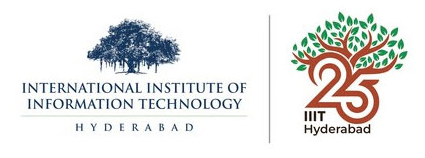

The IAStructE – IIIT Hyderabad student chapter of the Earthquake Engineering Research Centre organized a Guest Lecture on January 23rd, 2024. The lecture, titled “Sensor-Based Structural Health Monitoring"” was open to postgraduate and research students, faculty members and interns.
Dr. Nemkumar Banthia, Killam University Professor and Canada Research Chair at University of British Columbia, delivered the lecture. His primary area of research is in Sustainable Concrete Infrastructure with emphasis on nano-modified fiber reinforced composites, ultra-high performance concrete materials, waste recycling, fracture analysis, earthquake strengthening and sensor based structural health monitoring.
He provided a comprehensive overview of essential aspects related to the need of sensors for constantly monitoring the behaviour of structures, the glaring need for unification of civil engineering and electronic engineering for safer and more efficient structural designs and future prospects for India in the domain of sensor based monitoring for not only strctures, but wider domains.
Professor Banthia began the lecture by using the case study of a bridge collapse in Montreal, highlighting that the incident could very well have been prevented had there been sensors installed at the piers and foundation of the bridge. The inability to constantly monitor foundational behaviour and reliance on man power that produces relatively inncaurate inspection reports are among the root causes of strucutal collapses.
This was followed by a segment highlighting the importance of sensors in different domains such as waste management, water supply networks and infrastructure. Especially in the domain of water supply, sensors are being used for maintaining temperatures, chemical levels, leak detection in pipelines and scour detection in large scale concrete tanks. The working of a few of these sensors was discussed in detail later during the lecture.
To help the audience in understanding the working of sensors, Professor Banthia kept the presentation alive with interactive graphics and figures. Concepts such as signal transfers, cloud data storage, LoRaWAN (Long Range Wide Area Network), Sensor Data Interpretation were discussed through these.
The final segment of the lecture involved a detailed look into different types of sensors that are actively being used in different industrial domains. Bridge girder sensors to monitor loads on the bridge deck, pier and foundation sensors to check pier loads due to water flow and ice sheet formation (a common phenomenon in Canada) were discussed. In the domain of water supply, Smart Concrete Patches are being used to detect leakages; these sensors detect changes in conductivity to identify presence of water and subsequently cracks. Installed nano carbon tubes are an innovative approach to make concrete conductive and help in faster and more accurate data collection for the sensors. Other sensors included Medium Recognition Sensors for indoor flood detection, railway track damages and monitoring water movement in soil.
To conclude the lecture, Professor Banthia emphasized on the need for integration of civil engineering and iOT sensor industry for better load calculations, efficient design and eventually safer structures that can withstand the test of time. This was a very engaging and insightful discussion, with active participation from the attendees. This discussion enriched the overall exploration of the topic and its significance in structural safety and integrity for constructions in India with Cananda being one of the benchmarks for sensor based structural health monitoring.

Visitors Count